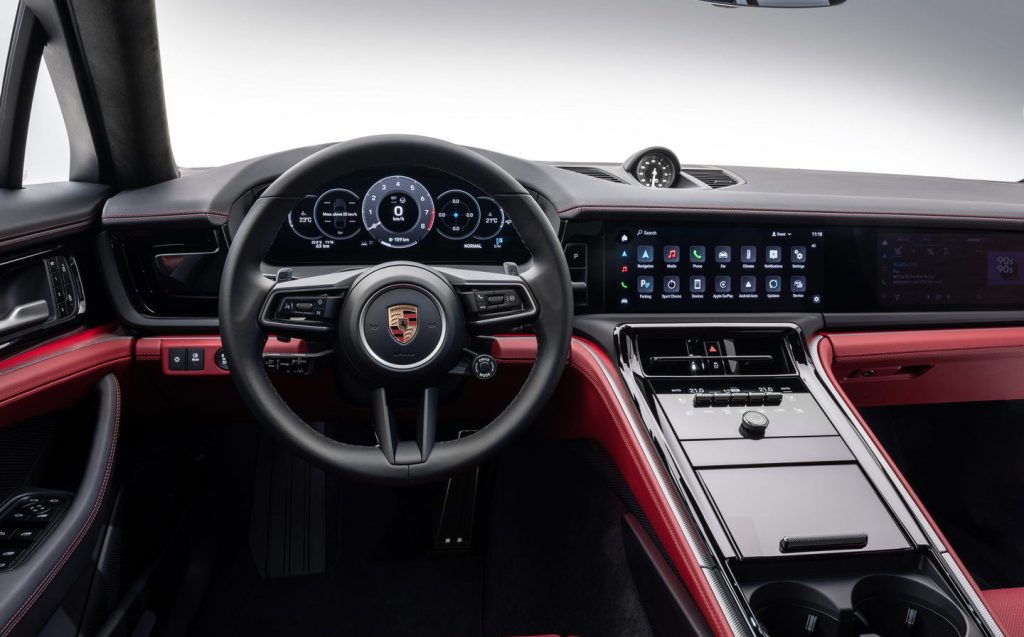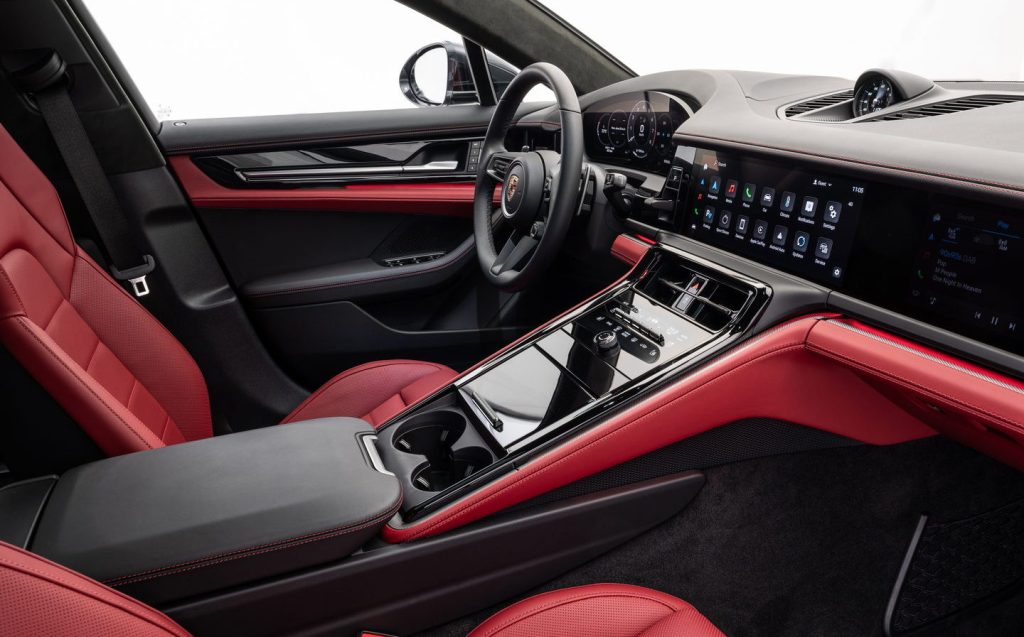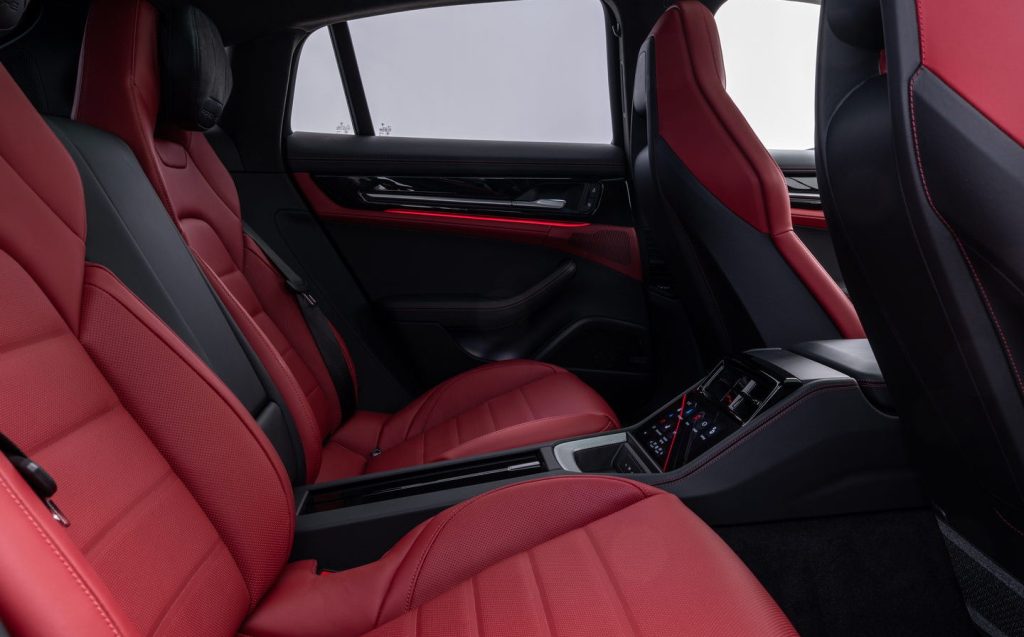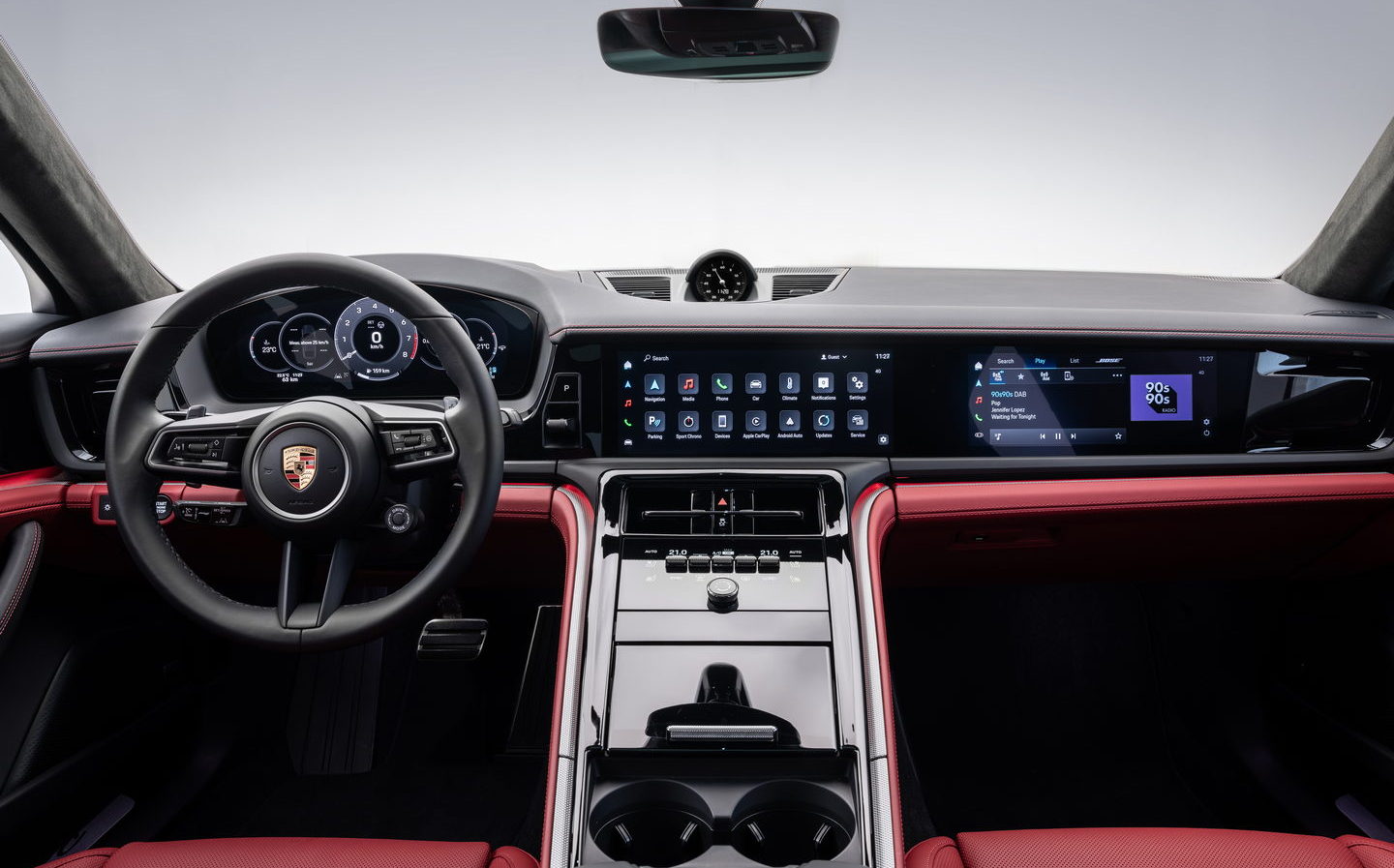New Porsche Panamera luxury saloon gains the highly digitised interior of the Taycan EV
Posh, car-loving vegans catered for, courtesy of leather-free interior option
Porsche has revealed what the dashboard and main controls of the forthcoming third-generation Panamera luxury saloon will look like — with clear influence coming from the interior of its Taycan pure-electric flagship.
That means the Panamera has a driver-focused, highly digitised display called the “Porsche Driver Experience”, which is centred around a 12.6in freestanding instrument cluster, a central 12.3in touchscreen for the Porsche Communication Management (PCM) infotainment and the relocation of the gear selector to the main fascia.
Taycan shows ICE Porsches the way
Porsche clearly wants all of its products, whether they’re electric vehicles (EV) or powered by internal combustion engines(ICE) or hybrid drivetrains, to “be more Taycan”. This driver interface is not just lifted from the Taycan itself, with a few tweaks admittedly, but it has also been seen recently in the facelifted Cayenne SUV range.

The key feature of Porsche’s driver-machine interface concept is to have all the control elements relevant for driving clustered around the steering wheel. This not only simplifies operation of the gen-three (G3) Panamera in normal driving, it’s particularly helpful during more spirited stints behind the wheel — something a sports saloon such as the Porsche is more than capable of.
In some instances, Porsche reckons on the wheel is even better than near it. Both the drive-mode select rotary dial and the toggle switch for the central infotainment screen of the G3 Panamera are located on the three-spoke wheel itself.
One of the big changes from the old Panamera’s cabin to this one is the placement of the gear selector lever. It’s now on the main fascia, next to the wheel — and, again, this echoes both the Taycan and Cayenne interiors — which in turn frees up more space in the central transmission tunnel.
Porsche has used this to equip the new Panamera with a larger centre storage bin for loose items, as well as a sleek-looking climate control panel that’s a blend of touch-to-control surfaces and physical switchgear.
Another Taycan feature that makes its way to the Panamera are the vaneless air vents. These are adjusted electrically, with motors deep in their housings altering the flow of air accordingly.
Screens, screens, everywhere
The 12.6in “cowlless” instrument cluster in the new Panamera isn’t quite as big as the 16.8in Curved Display you’d get in a Taycan, but these screens are obviously hewn from the same digital source material.
It invokes memories of Porsche’s analogue instrument clusters of old, arranging the information it displays into three key areas — but with the rev counter taking pride of place in the centre.
There’s also an option for a head-up display above this unit, which can be operated directly from the Panamera’s sports steering wheel.

And as if a 12.6in cluster and a head-up display and a 12.3in central touchscreen for the PCM infotainment wasn’t enough, there’s also now the option of the 10.9in Passenger Display too.
Again an idea seeded in the Taycan and carried over to the 2023 update of the Cayenne, it allows the front-seat occupant in the Panamera to have their own dedicated touchscreen, which shows various functions related to the car’s onboard software. It’s also not visible to the driver’s eyes, even when it’s in operation — a safety feature when on the move to prevent driver distraction.
Pepita: a fabric, not a Mexican midfielder
It’s not only in the technological department where Porsche is aiming to impress with the new Panamera’s interior. The use of high-quality, luxurious materials should ensure this feels like the truly prestige product it is.
Design flourishes include the way the main fascia appears to bleed into the door cards, creating some visual continuity, while the steeply angled centre console is a defining Panamera trait.
Porsche will equip the Panamera’s dashboard with “coast-to-coast” ambient lighting, a first for the model and a feature which aims to emphasise the width of the cabin.

The German company is also promising that the seats are more comfortable than before, thanks to improved foam padding, while a leather-free interior will be offered for those who want it — this combines Race-Tex microfibre with Pepita fabric, so that vegan consciences can be clear when driving the new car.
Related articles
- If you were interested in the interior of the new Porsche Panamera, you might also like to check out what we had to say about the updated Porsche Cayenne E-Hybrid
- You might be interested to read about the limited-edition Porsche 911 Dakar too
- And don’t miss our review of the 718 Cayman GT4 RS
Latest articles
- Ferrari 12Cilindri Spider review: Heady blend of traditional and futuristic becomes even more intoxicating after lid is removed
- Skoda reveals its fastest accelerating production car yet: the electric Elroq vRS
- Carmakers fined £461m in UK and Europe for not competing over vehicle recycling
- Volkswagen Tayron 2025 review: Useful seven-seat SUV and decent PHEV — just not at the same time
- Skoda Enyaq 2025 review: Same book, different cover for electric SUV
- Lewis Hamilton wants to design a modern day Ferrari F40 with manual gearbox
- Dacia Bigster 2025 review: The ‘anti-premium’ family SUV that punches above its weight
- Your car’s worn tyres could be being burnt illegally in India, investigation reveals
- Open-top 214mph Aston Martin Vanquish Volante is world’s fastest blow-dry














